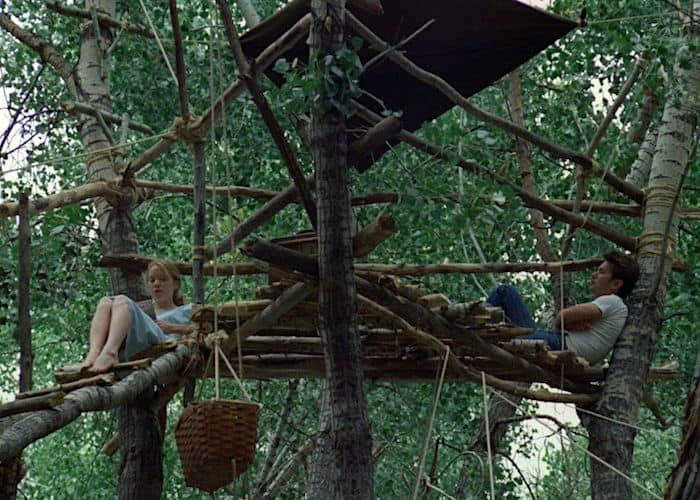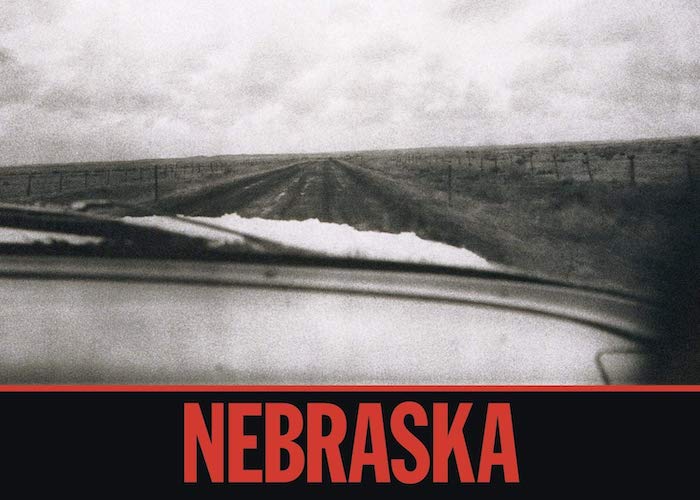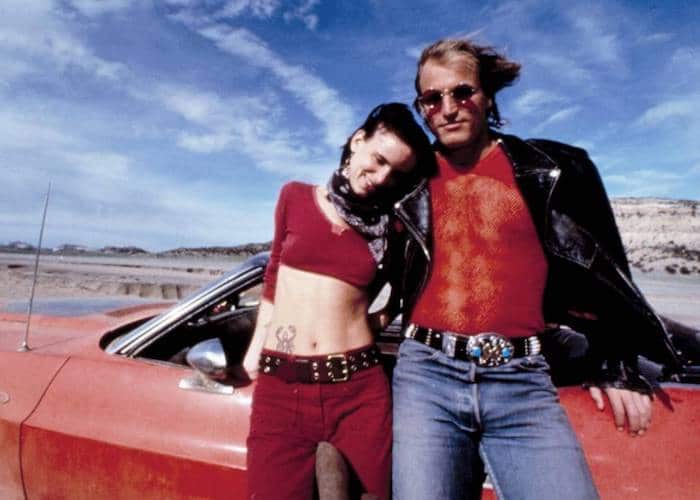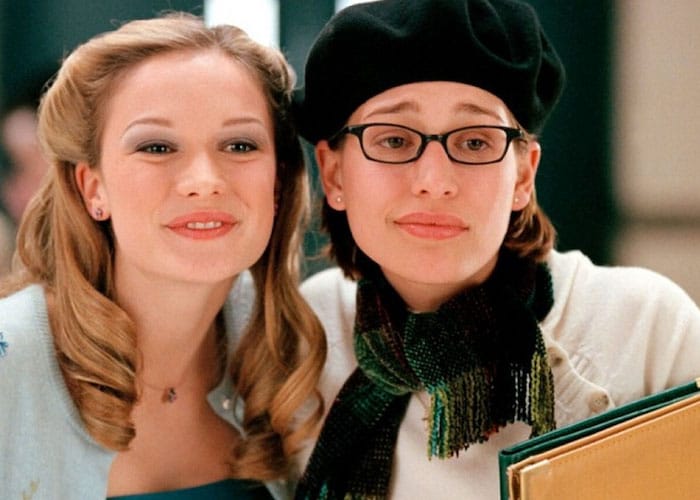In the summer of 1972, following a rough start as a screenwriter in Hollywood, Terrence Malick went into production on his low-budget first feature as a director, Badlands. The independently financed film stars Sissy Spacek and Martin Sheen as young lovers turned criminals in a story inspired by the killing spree of Charles Starkweather and Caril Ann Fugate. Neither the first nor last screen depiction of the real-life duo, by name or not, and definitely not the first crime film of its kind (a number of similar movies were released in the early ’70s alone on the heels of Bonnie and Clyde‘s success), Badlands has managed to maintain a lasting significance above the rest, and not only because it launched Malick as an important filmmaker.
Arguably still his best, Badlands is certainly Malick’s most influential movie, which is interesting considering it’s so distant from his other efforts. Much of the filmmaker’s general (mainly later) style is imitated, but Badlands is perhaps the only one that has very directly inspired other films as well as music artists and comics. The first of two of Malick’s films selected for the National Film Registry for its “cultural, historical, or aesthetic significance,” Badlands is highlighted by the Library of Congress for being “one of the most impressive of directorial debuts.” The film is in the Criterion Collection, it has inspired fashion tips and fashion photography and so much voiceover narration, it marked the very brief first screen appearances from the star’s sons Charlie Sheen and Emilio Estevez… Its legacy goes deep.
We’ve celebrated the film before and certainly will again. Badlands is filled with perfect shots. And it features plenty of scenes we love. This time, we’re highlighting that deep legacy, mostly where it’s inspired and influenced other classic and not-so-classic works in various media but also where it’s literally spawned human beings. These people and things wouldn’t be the same were it not for Malick’s first film:
The Spacek and Fisk Family (1974-present)

Both Sissy Spacek and Jack Fisk could credit Badlands with making their careers. It was Spacek’s second movie and her first notable turn in a leading role. Fisk had done some minor work as an art director prior but with Badlands he began a longtime collaboration (albeit with a significant hiatus) with Malick and that led to multiple collaborations with Brian DePalma and other work (he also regularly worked with David Lynch, but they were best friends even before Badlands). Yet the greatest thing to come out of both of their involvement with this movie was surely their romantic pairing.
Spacek and Fisk met during the shoot in ’72, with she recalling his creation of the treehouse followed by an initial would-be date on a boat (“The boat sank,” she told Texas Monthly. “Right then I knew life with Jack was going to be eventful”). In her autobiography, My Extraordinary Life, she mentions that he would hide gifts for her all over the set. They moved in together as soon as they wrapped and then married in a tiny private ceremony with their dog the sole witness (he even “signed” the marriage license) in April 1974, just a few weeks after Badlands hit theaters and have remained one of the rare long-lasting Hollywood couples ever since.
They’ve worked together on a number of other movies, too, including Carrie, Eraserhead, and some lesser titles he directed, but they’re otherwise a low-profile couple, living on a reclusive farm in Virginia. She insisted on keeping her birth name (though it’s unclear if legally she’s Mary Elizabeth Fisk given a story in her memoir about her fighting with the US passport office) but their two daughters are Fisks — Sissy lookalike Schuyler Fisk is now also an actress and singer, while the younger Madison Fisk followed her father, whom she looks more like, as an art director, assisting Jack on recent Malick films.
In 2012, Spacek told The Huffington Post:
“I think anything that happens in our lives has the power to change everything…If I hadn’t left Texas, I might not have met the director Terrence Malick, and I wouldn’t have met my husband and I wouldn’t have had the children that I’ve had. Life is interesting like that.”
Bruce Springsteen (1978-1982)

Bruce Springsteen, whose debut album came out the same year as Badland‘s premiere, was clearly a fan. He named the first track off his 1978 album Darkness on the Edge of Town after the movie. The lyrics of “Badlands” aren’t exactly relevant to their presumed namesake, probably because the Boss just wanted a song with that title and found what it was later — the story behind the tune (as told in Brian Hiatt’s book about Springsteen’s songs) never even mentions the movie.
It’s no coincidence, though, that two albums later, he’d have a song about (and from the perspective of) Charles Starkweather. “Nebraska,” the title track off the 1982 release, is said to have been written after Springsteen saw Badlands for the first time on TV and was moved by it. The song’s lyrics describe Starkweather’s first encounter with Caril Ann Fugate as it’s fictionaly portrayed in the movie: “I saw her standin’ on her front lawn just a twirlin’ her baton.”
True Romance (1993) and Natural Born Killers (1994)

Badlands is the movie so nice that Quentin Tarantino remade it twice. Okay, so “remake” is not quite the right word, and Tarantino didn’t exactly make either of these movies, just wrote their screenplays. True Romance and Natural Born Killers, as directed by Tony Scott and Oliver Stone, respectively, are aesthetically dissimilar, but each follows a couple on the road deeply in love and involved in some sort of criminal activity. Oddly, while Scott named Badlands as one of his favorite movies, Tarantino has never has included it among his top picks.
True Romance is more superficially influenced by Badlands in its packaging, from the voiceover narration by Patricia Arquette to the killing of her character’s pimp (in place of her father) before fleeing to Hans Zimmer‘s score, specifically the track “You’re So Cool,” mimicking Carl Orff‘s Gassenhauer (from Schulwerk), which is used as the theme for Malick’s movie — that was Scott’s idea. Natural Born Killers pays less blatant homage but its story of lovers on a killing spree is inspired by the plot of Badlands, including the murder of the girl’s father.
Slap Her, She’s French (2002)

Not all movies inspired by Badlands are created equal. Slap Her, She’s French, which is about a Texan family who welcomes in a French exchange student, is the kind of movie where the studio can’t even decide on consistent punctuation for its title. Is there a comma? Or ellipses? Should there be an exclamation at the end? Even disregarding the punctuation, though, the movie’s title is the beginning of its problems. And of its invitations for questions about its choices.
Why, for instance, does the movie begin with one kind of narration and musical cue only to quickly change to another that’s clearly inspired by Sissy Spacek’s in Badlands complete with a new bit of score borrowing from Orff’s Gassenhauer? And then just as quickly change tune and tone again just seconds later? Is it homage? Spoof? I really can’t say, but if you’re ever curious to check out the reference, you only need to watch (free via Tubi) the first few minutes of the opening credits.
Here’s a bit of trivia: Slap Her, She’s French was actress-turned-filmmaker Melanie Mayron‘s second feature as a director. Her first, The Baby-Sitters Club, stars Schuyler Fisk in her breakthrough role. Mayron previously had co-starred with Fisk’s mother in the 1982 movie Missing.
The post The Legacy of Terrence Malick’s ‘Badlands’ appeared first on Film School Rejects.





0 comments:
Post a Comment